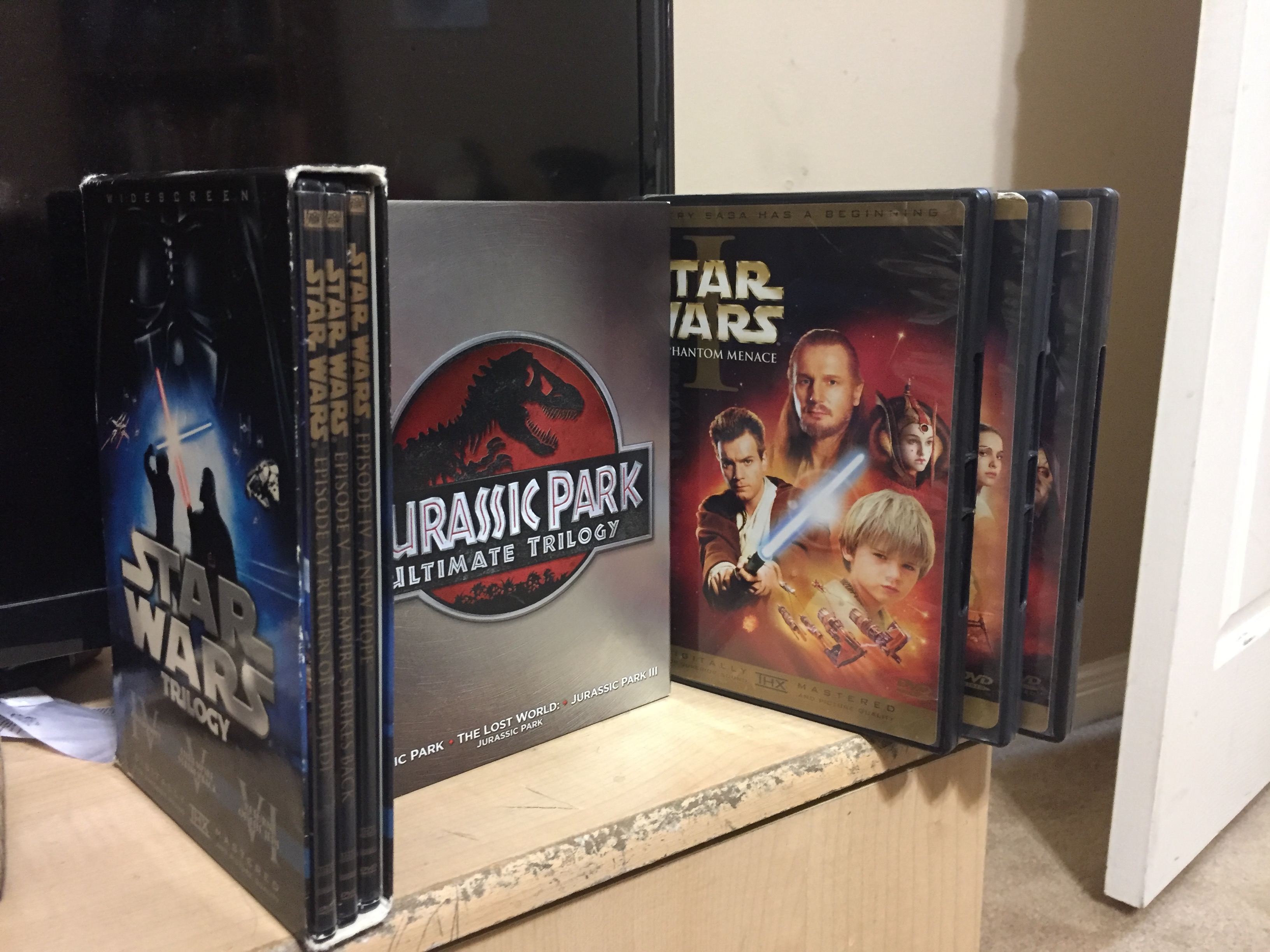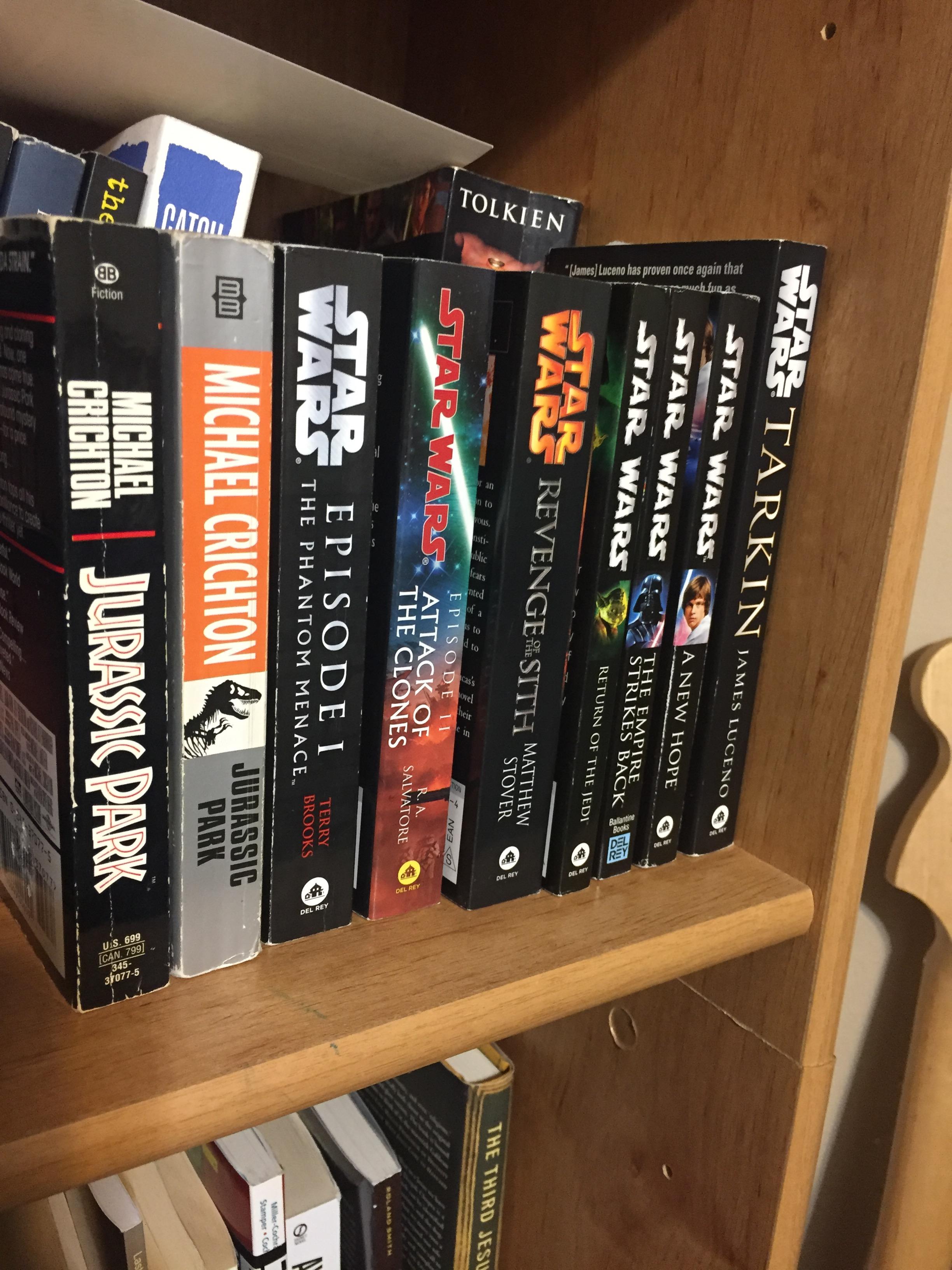
BLOG: Exploring the unlikely connection between ‘Star Wars’ and ‘Jurassic Park’
William Shatner, who plays one of the greatest Star Trek captains of all time, once spoke on the relationship between “Star Wars” and “Star Trek.” He said the two series have a sort of “symbiotic relationship,” as both have influenced each other.
This makes sense, as the original 1960s “Star Trek” series was certainly an inspiration on George Lucas’ “Star Wars” which debuted in theaters in 1977. By this time, “Star Trek” consisted of only the original series, the animated series and a few tie-in materials and was essentially a canceled franchise that had developed a cult following.
But after the release of “Star Wars” in 1977, the demand among studios for space-based films grew, and as Shatner noted, this motivated CBS to revive “Star Trek” and begin what would become multiple “Star Trek” films, starting with “Star Trek: The Motion Picture” in 1979. As one can see, both franchises helped inspire one another. But could there be another iconic film that shares a similar relationship with “Star Wars”?
As surprising as this may be, none of the “Star Wars” films are my favorite movie. Anyone who knows me knows that while I am a massive “Star Wars” (and “Star Trek”) fan, my all-time favorite film is and always will be “Jurassic Park,” directed by the amazing Steven Spielberg.

“Jurassic Park” and “Star Wars” are two franchises that have truly made me into the man I am today. It may surprise many that these two franchises are more connected than we think and share a relationship that has helped one create the other and revive the former.
Let’s first get into the two biggest connections and similarities. George Lucas and Steven Spielberg are good friends and are two of the pioneering figures of what was considered the New Hollywood era. Both made films in the ‘70s that were innovative and showed a new direction for Hollywood, the epic summer blockbuster.
On a contemporary note, the two forged a connection in 2017 with the release of “The Last Jedi,” which starred actress Laura Dern, who played Dr. Ellie Sattler, one of the prominent protagonists of “Jurassic Park.” While many perhaps did not think much of this, it was awesome as a fan of both series seeing the two now share an actress that I had come to know and admire because of her acting in “Jurassic Park.”
Of course, the next big thing is that both films were major special effects innovators for their time. In fact, saying ‘for their time’ only can apply to “Star Wars,” as I hold the conviction that the dinosaurs and overall effects in “Jurassic Park” still hold up to this day, being one of film’s greatest examples of the magic and realism CGI and practical effects can create. And it is the special effects that reveal the deeper unlikely connection between the two.
Time to get historical.
When George Lucas was developing his vision for “Star Wars,” he quickly realized that his vision was a grand kind that demanded effects Hollywood simply had never pulled off before. So to get started, he created the company Industrial Light and Magic ( ILM) which is still to this day the biggest special effects company in Hollywood and arguably the world, with Spielberg and Lucas’ films being some of the main movies to have its effects done by the company. Since 1975 the company has provided the special effects for all the big blockbusters and even dramas (like Forrest Gump) of American film and it is no understatement to say film effects would certainly be behind today had the company not been founded.
By 1983, the last “Star Wars” film for 16 years, “Return of the Jedi,” had been released and George Lucas was exhausted but vowed to make the prequels and sequel trilogy eventually. But, he knew that he could not make the prequels any time soon, as he knew his vision for the prequels demanded special effects technology like no other and was certain he would have to wait years before such tech would come to fruition.
Then came along a New York Times number one bestselling novel about dinosaurs.

Even before Michael Crichton’s book was finished, studios were bidding for the rights to turn the novel “Jurassic Park” into a film. Not surprisingly, Spielberg, a friend of Michael Crichton, became the lucky legend to helm the project.
During the ‘90s when “Jurassic Park” was in pre-production, Spielberg and those at ILM were trying to give the most realistic and best depiction of dinosaurs possible, and this proved to be the team’s biggest challenge at the time.
But a miracle happened. After months of working with the latest computer generating technology, the team at ILM had managed to create the best looking CGI dinosaurs in history. Months later after hard shooting and great production, “Jurassic Park” premiered to be one of the greatest films of the year and arguably ILM’s greatest special effects achievement at the time.
And these effects did not go unnoticed by ILM’s founder George Lucas, or other directors in the industry. Seeing those dinosaurs, George Lucas realized how far the technology for effects had come since the ‘80s (when the last “Star Wars” film at the time was released) and knew now that he could finally begin work on his prequels. And he did.
Other directors like Peter Jackson realized that the technology was good enough to make films like “Lord of the Rings” and his “King Kong” remake, Stanley Kubrick began work on his film “A.I.,” and special effects guru Stan Winston partnered with James Cameron to create a new special effects company which would ultimately produce effects for “Titanic” and “Star Trek: Nemesis” and continues to produce for many superhero and action films today.
Overall, it should be no surprise that two big franchises started by two old film school friends have a connection that has helped both pioneer and develop each other. And on a personal level, as a lover of both, it’s awesome to know how two of my favorite franchises have such a beautiful symbiotic relationship in the same vein as “Star Wars” and “Star Trek,” a special effects connection driven by the element of filmmaking that helps make the movies such a wonderful and magical experience.
